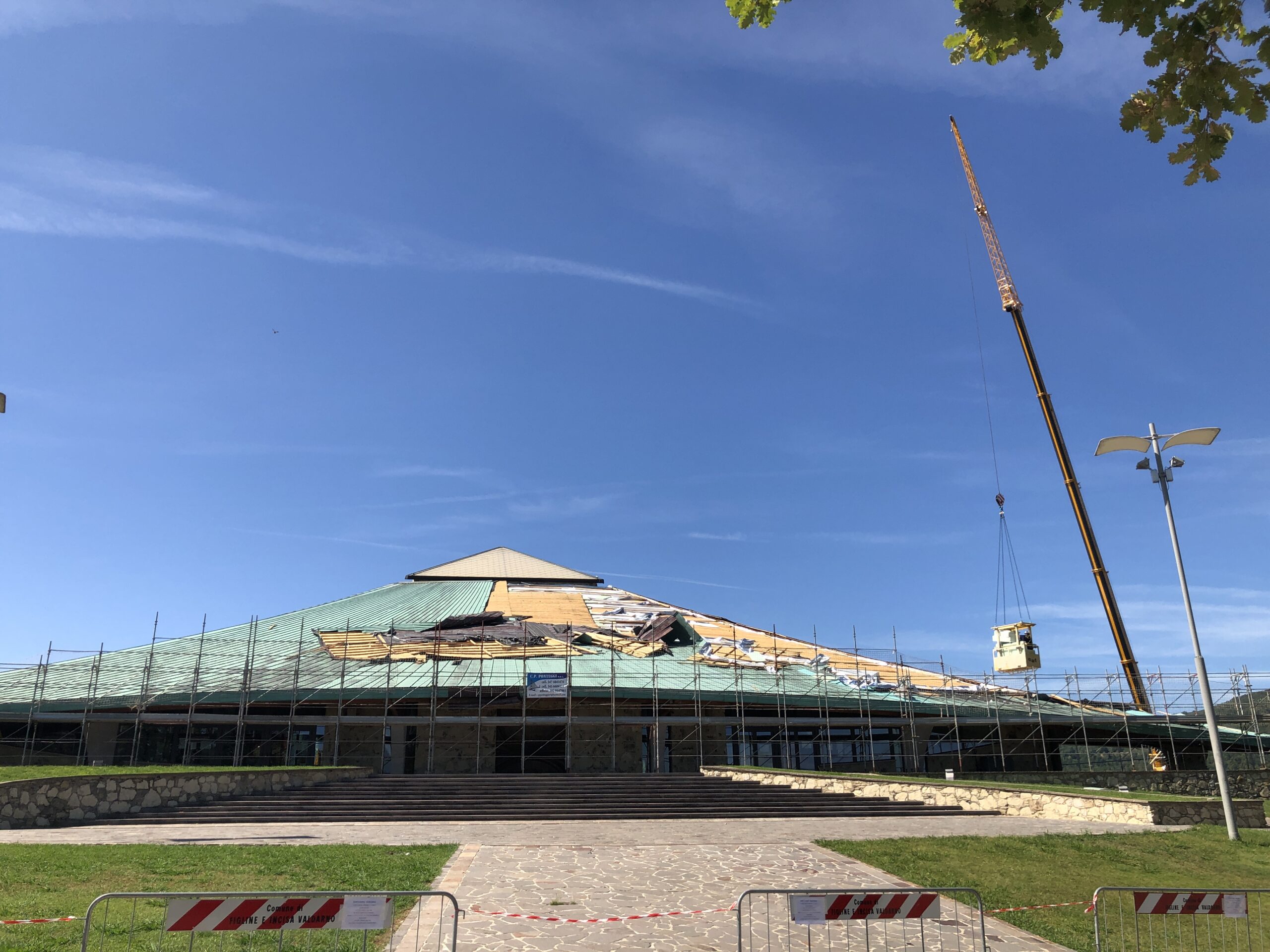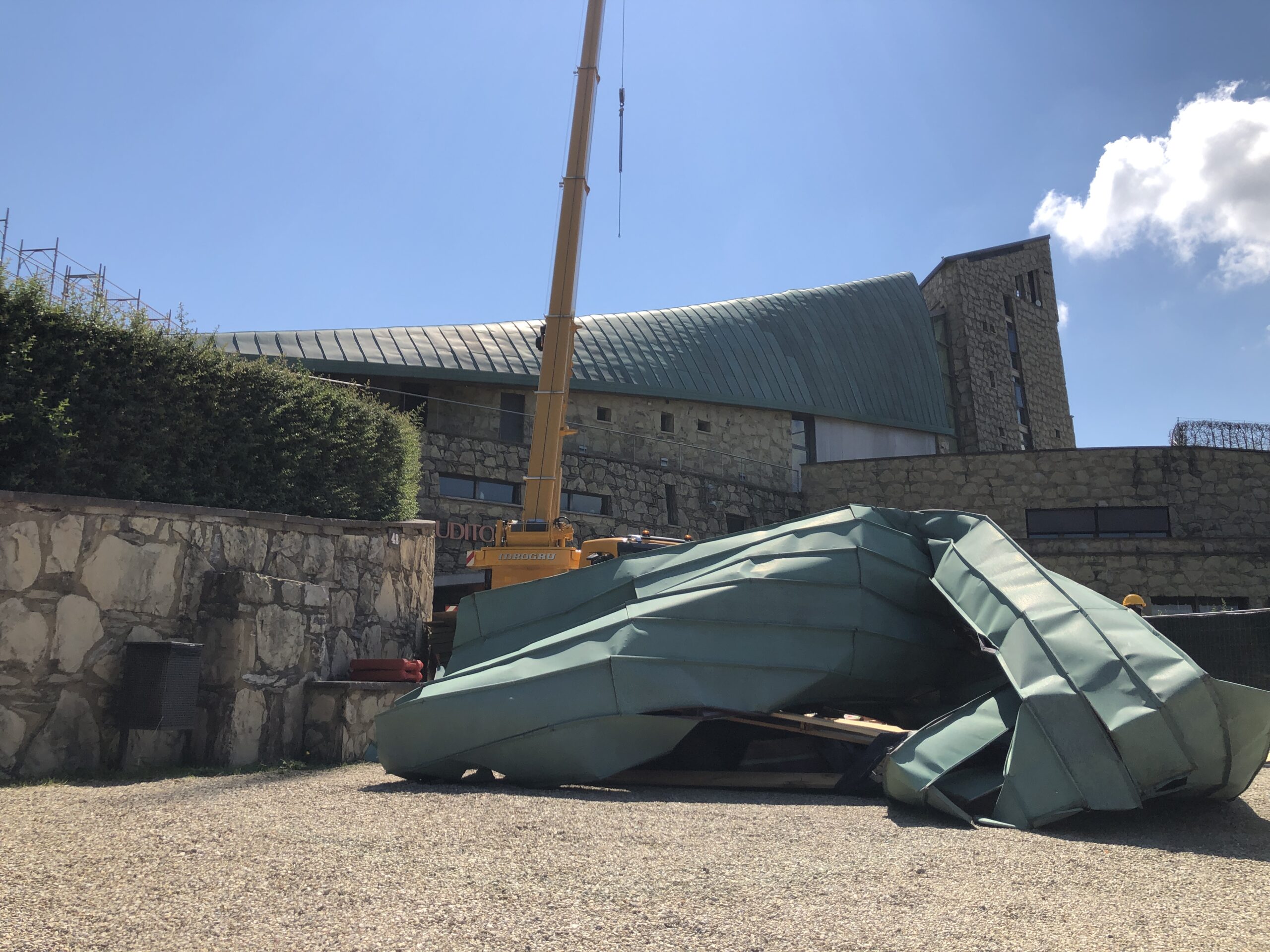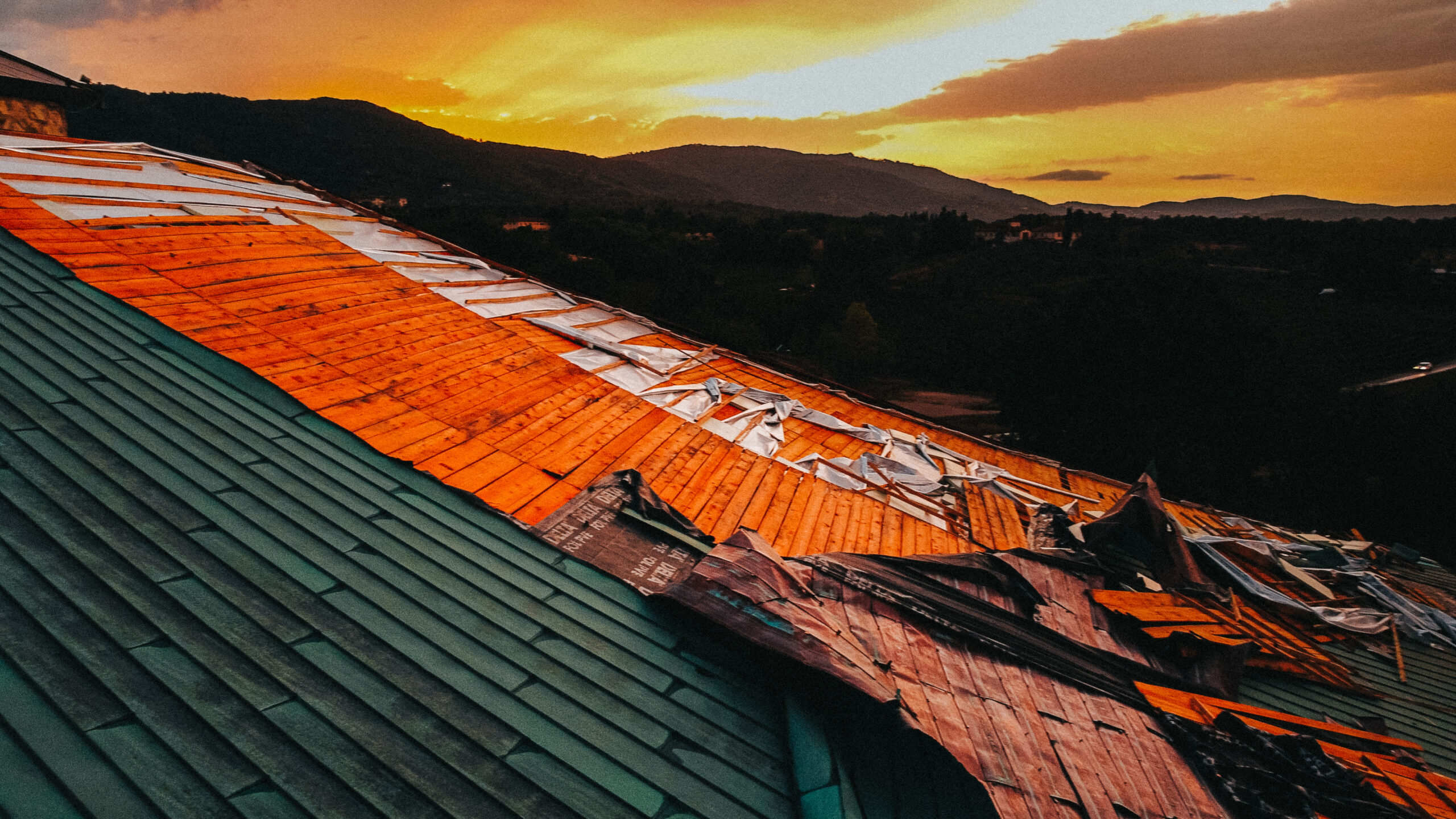Securing the roof of the Shrine to prevent rain inside the building is being completed. This will be followed by the reconstruction of the roof with criteria that will take into account the effects of climate change. The apprehension, trust and generosity of citizens near and far.
The very long telescopic arm of the truck towers over the torn roof of the shrine is like a giant lightning rod. The great casualty is in deep therapy. The surviving roof of the Theotokos complex has been cleared of debris and extensive damage produced by the devastating force of the August 18 wind.
That fury carried away not only the roof, but also the underlying layers of planks, to which the copper sheets were anchored. The technicians who carried out the inspections converge on the hypothesis that the roof was lifted by suction, , with a force to which people in Italy are not accustomed, but which will now become the reference for assessments of a general consolidation.
In September 2021, a similar event had only torn down the copper roofing, covering an area about one-tenth the size of what happened just now. Now two stained glass windows on the right side of the building have also been knocked down and shattered, reflecting the power of the wind that day.

Ongoing work
The roof was then poorly designed? Experts said that it was built according to the technical standards for construction in seismic zones in force 20 years ago in this area in compliance with the snow and wind loads required by the same regulations. . But climate change is taking place: the wind did not have the impetuousness manifested in recent years, and no one assumed such extreme weather events in the area. Two such episodes in eleven months make it clear that they will happen again, that everything has changed, and that, as a result, roof sealing characteristics must be adjusted.
In recent days, inspections have also been made with engineers from two leading national companies in the field of such constructions to define what the best remedial intervention might be. In the meantime, the ongoing work involves securing the Shrine so that it will no longer rain inside. A special sheathing is already being placed in the uncovered part of the roof, which will provide permanent waterproof protection. After that, the complete reconstruction of the roof will be done. We will have to wait until December for the reopening of Theotokos.
So the venue for the celebrations again became St. Benedict Hall. The first Mass was on Sunday, August 21. The rite was celebrated by the bishop of Asti, who was visiting the citadel together with about 50 young people. Bishop Marco Prastaro introduced, saying, “We inaugurate this space for Eucharistic celebrations.” For the inhabitants it was a significant presence, «“as if Jesus,” some confided “wanted to highlight that the shrine of stones is uninhabitable but the living shrine, which is the citadel with its inhabitants, is standing and continues to attract many people.».

The frame of mind of the residents
Never has there been such a desire for sunny days as there is here in Loppiano these days. The weather forecast is followed constantly. If it threatens to rain, the blood pressure of the whole citadel rises. If rain comes, apprehension pervades the residents. Everyone’s thoughts constantly run to the Theotokos, because water that falls inside the shrine can seep into the Auditorium, causing further extensive damage. The church is at the center of thoughts, speeches, and hopes. Also of on-the-spot checks about the kinds of work being done and how it is progressing. Those passing by often slow down or stop to note developments, take photos, ask for information.
The devastating force of the wind on that August 18 and the destructive hailstorm on the following night also affected Sophia University Institute and the roofs of some of the work sheds. Many trees were knocked down, a large number of branches broke and numerous cars were damaged. But the greater casualty is still the Theotokos complex, which has provoked responses and reflections among residents. . “I thought that there was also a message in this wounded roof,” writes Luigino, “in a closed and cordoned off church. And he explains, “In that sloping plane of blue aged copper, the wood below became visible depicting the brown flesh of humanity, of its wounds, of the dusts from its journey, of the wounds of the abandoned and desolate.” Alessandra and Luke add, “While the church as a building may suffer the ravages of time and weather, let us never forget that the true Church is us and not our buildings.”
From the permanent residents to the students of Sophia there was an immediate and generous willingness to set up teams of at least 10 people to take turns going into action whenever it rained, including at night, to collect water with special vacuum cleaners and prevent flooding of the shrine.
The closeness of those far away
The active participation of people from many parts of the world who wish to contribute to support the construction needed to remedy the consequences of the severe weather continues. Residents express their gratitude to all those who have already made financial contributions. Indeed, it is clear that the reconstruction and adjustment operations will exceed the damages noted on the insured structures. For this reason, the aid that is coming and will come will be invaluable in making Loppiano even safer and more welcoming.
To this end, we point out the current account in the name of P.A.F.O.M. at the banking institution Intesa San Paolo S.p.A.
Iban code: IT96O0306909606100000180817. Bic Code: BCITITMM. Reason for payment: Liberal donation Maria Theotokos complex.

